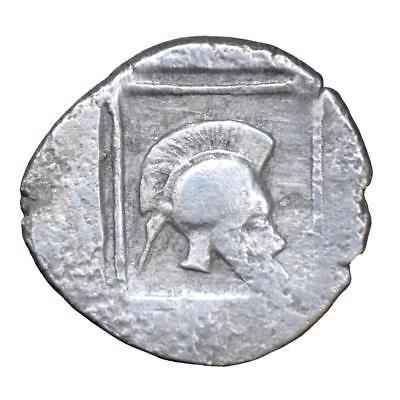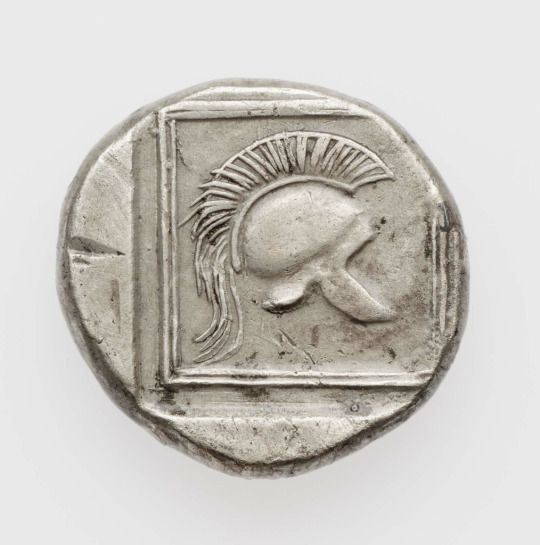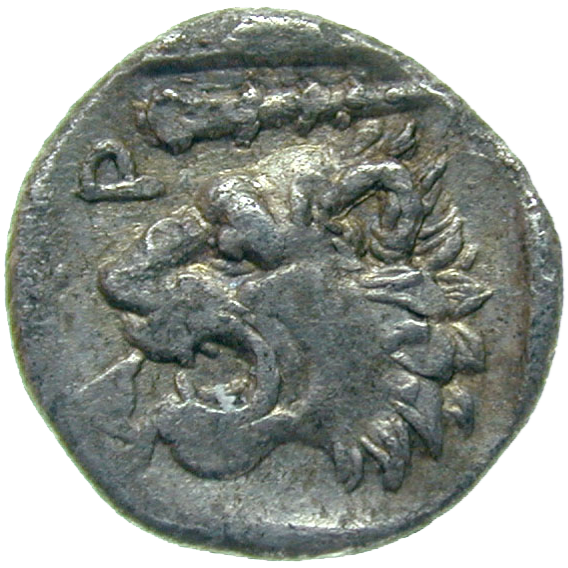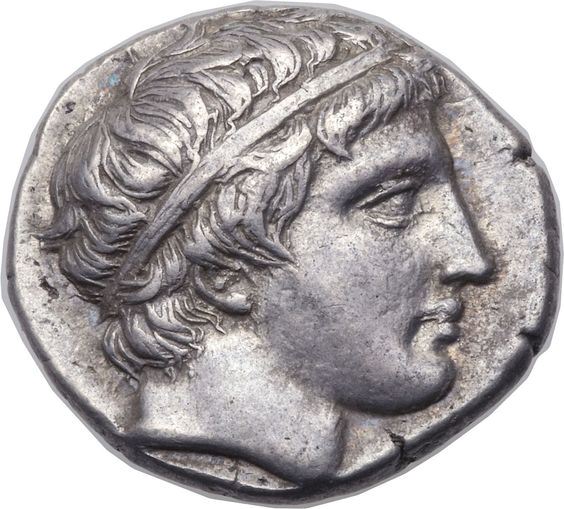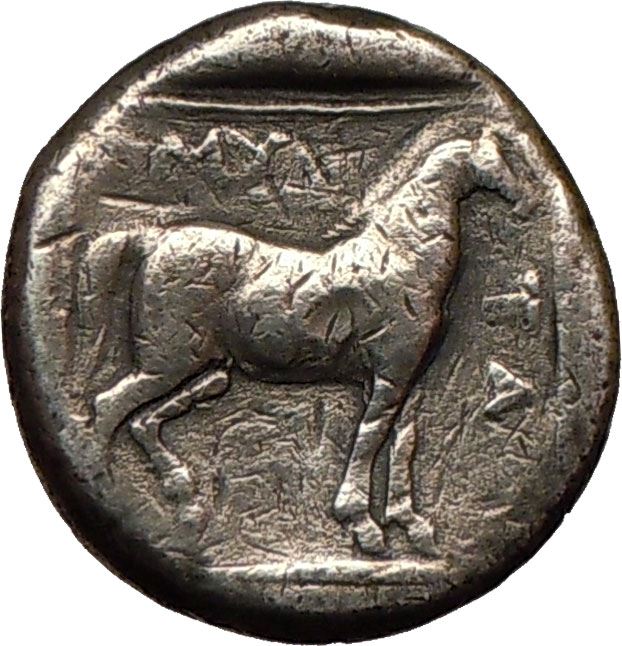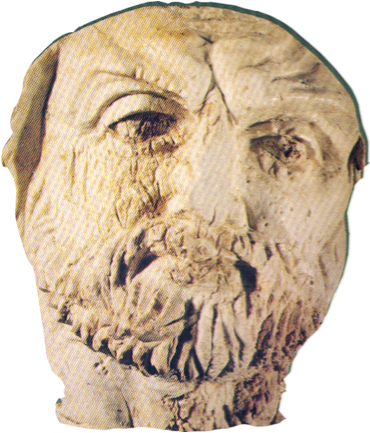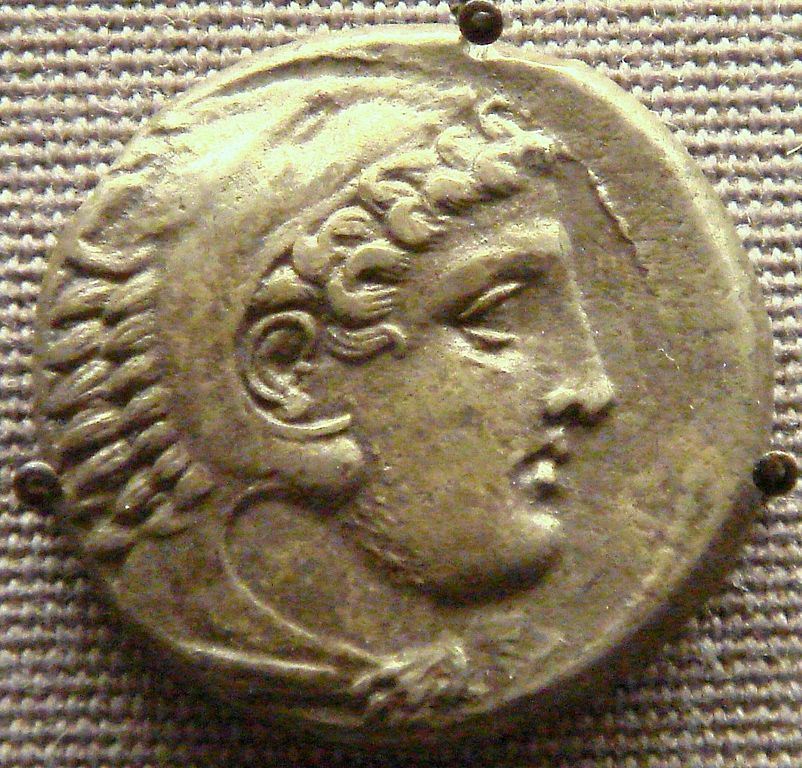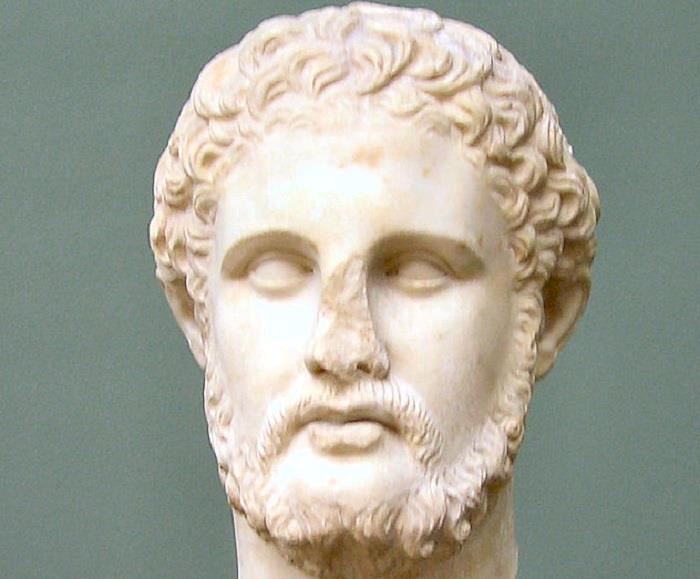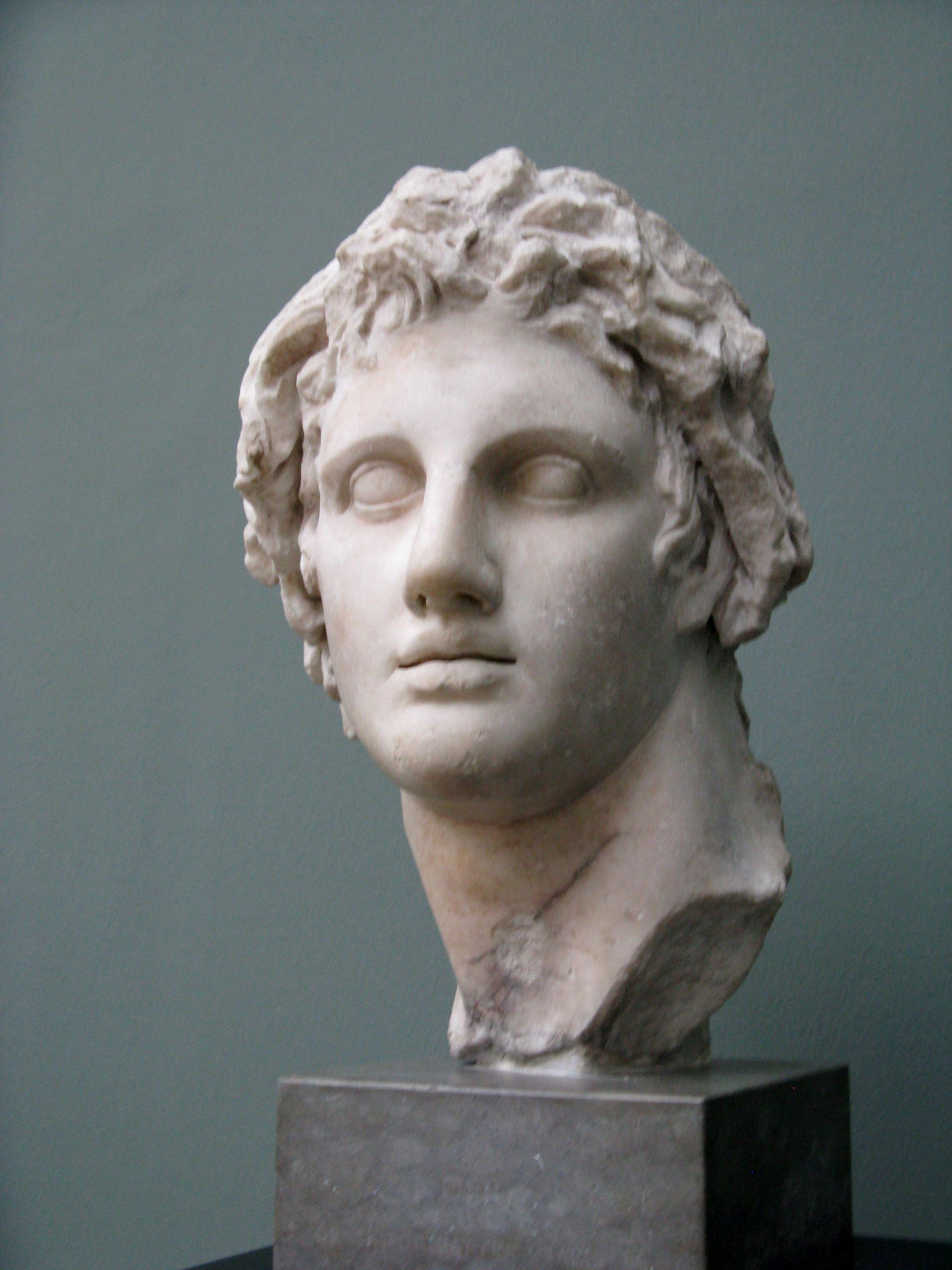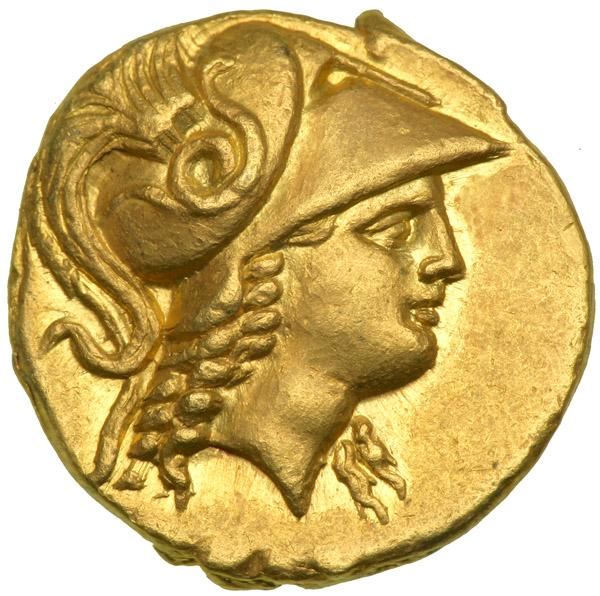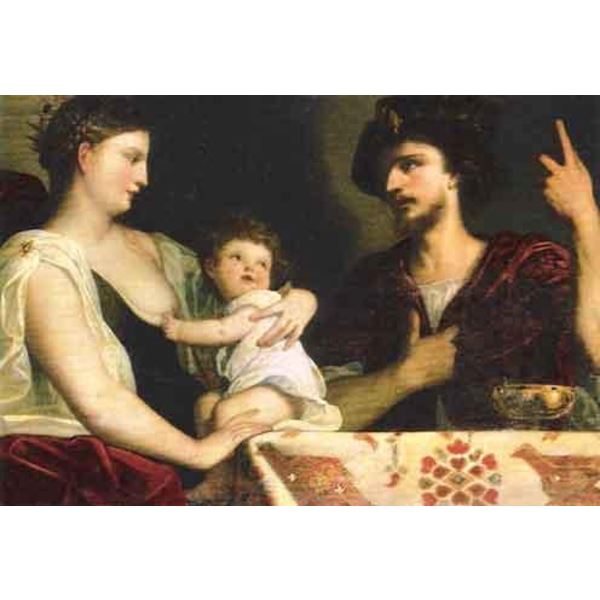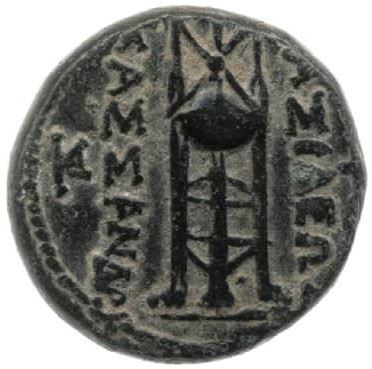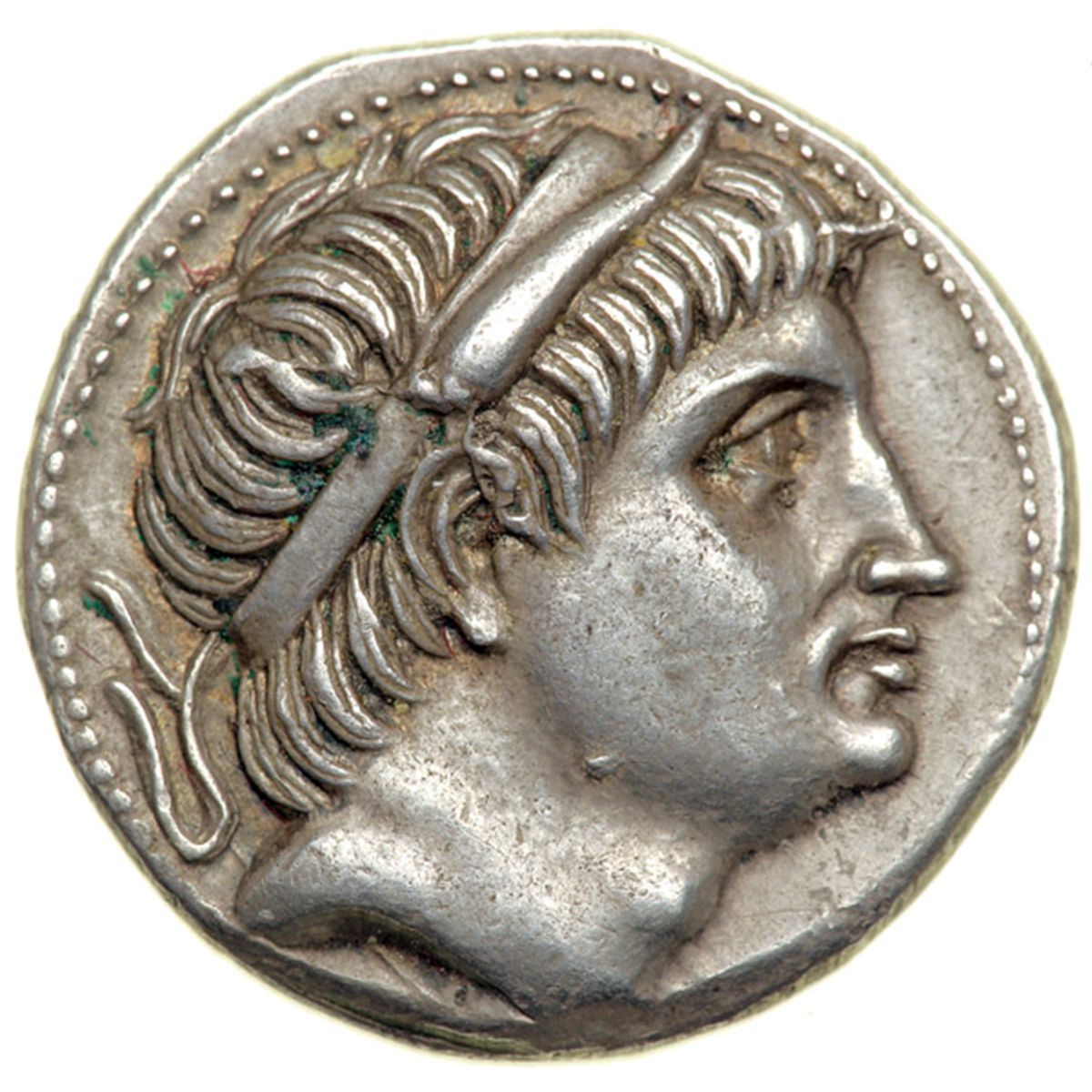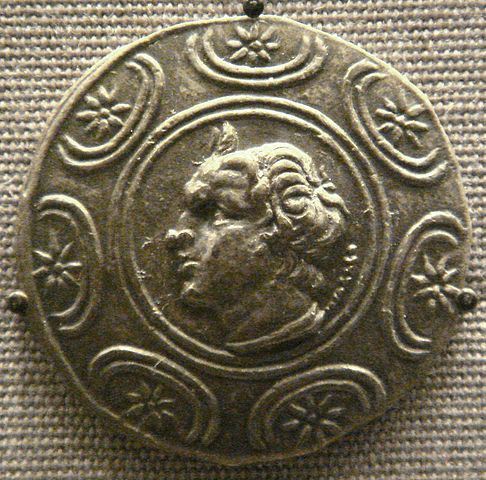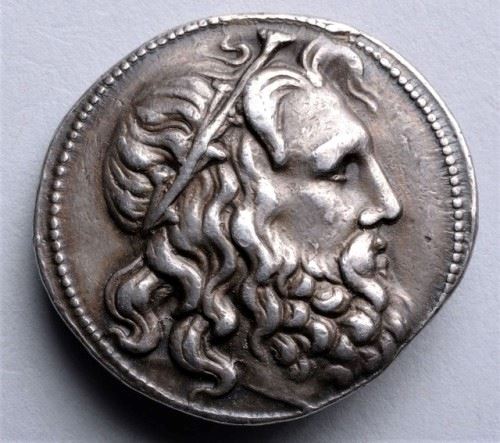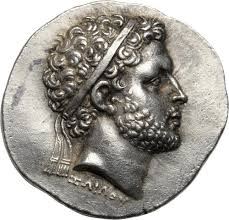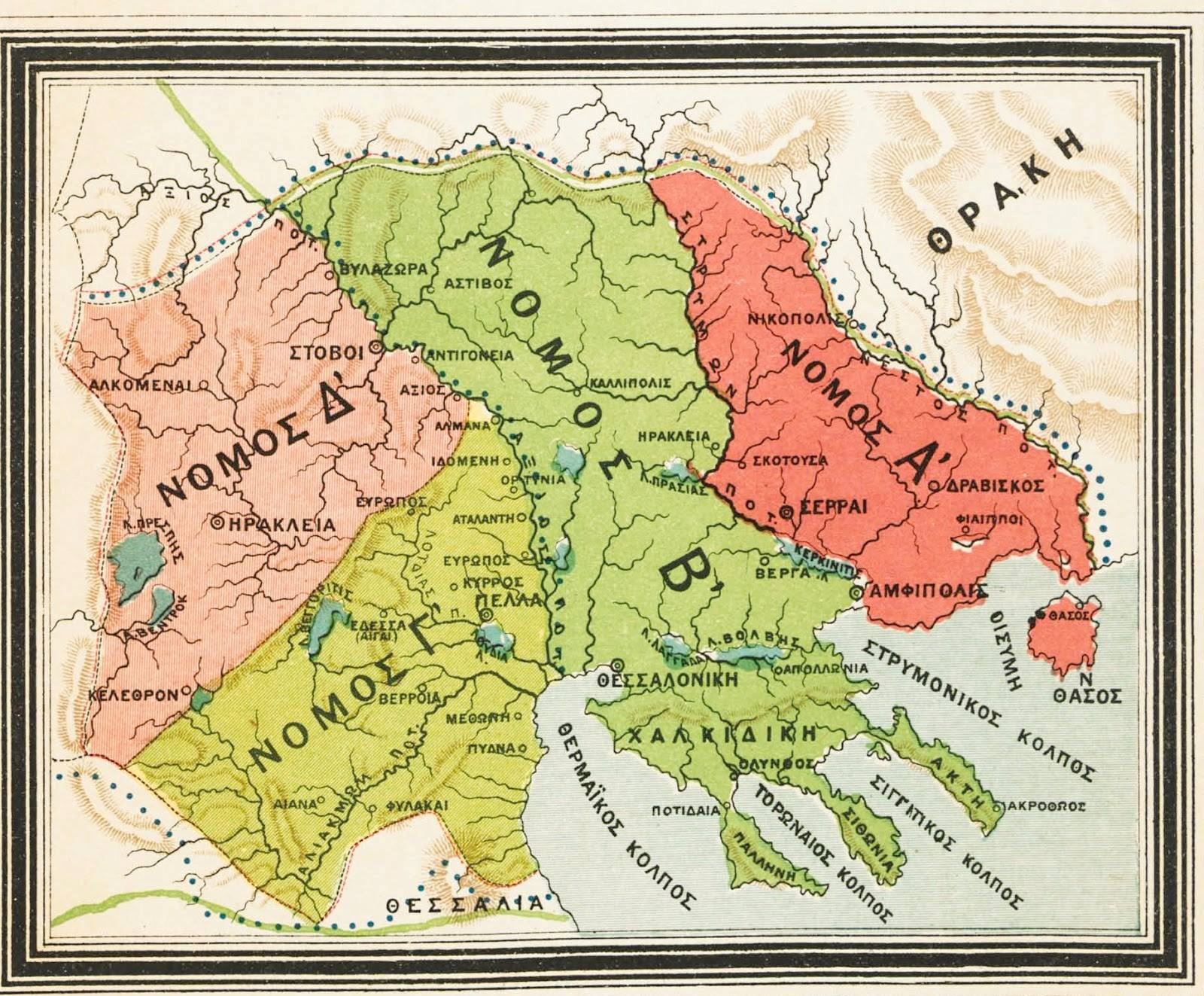Macedonia was an ancient kingdom on the periphery of Archaic and Classical Greece, and later the dominant state of Hellenistic Greece.
The kingdom was founded and initially ruled by the royal Argead dynasty, which was followed by the Antipatrid and Antigonid dynasties. Home to the ancient Macedonians, the earliest kingdom was centered on the northeastern part of the Greek peninsula.
Before the 4th century BC, Macedonia was a small kingdom outside of the area dominated by the great city-states of Athens, Sparta, and Thebes, but during the reign of Philip II, Macedonia subdued mainland Greece and Thrace through conquest and diplomacy.
Philip II's son Alexander III the Great conquered territory that stretched as far as the Indus River. For a brief period, his Macedonian empire was the most powerful in the world.
The kingdom was founded and initially ruled by the royal Argead dynasty, which was followed by the Antipatrid and Antigonid dynasties. Home to the ancient Macedonians, the earliest kingdom was centered on the northeastern part of the Greek peninsula.
Before the 4th century BC, Macedonia was a small kingdom outside of the area dominated by the great city-states of Athens, Sparta, and Thebes, but during the reign of Philip II, Macedonia subdued mainland Greece and Thrace through conquest and diplomacy.
Philip II's son Alexander III the Great conquered territory that stretched as far as the Indus River. For a brief period, his Macedonian empire was the most powerful in the world.
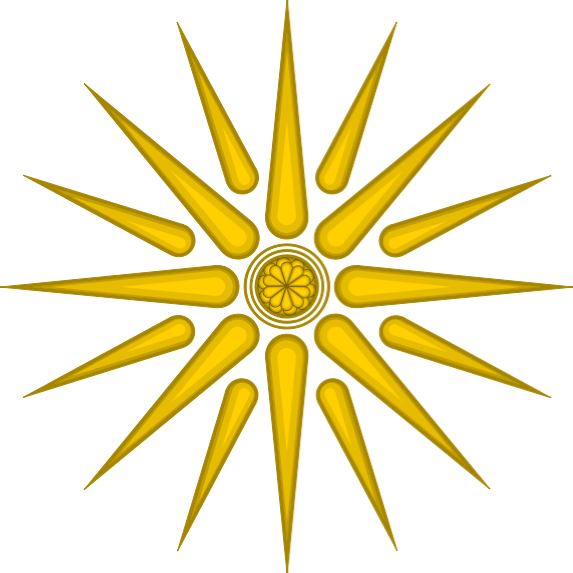
Alexander I was the ruler of the ancient Greek Kingdom of Macedon from c. 498 BC until his death in 454 BC.
Alexander I came to the throne during the era of the kingdom's vassalage at the hand of Achaemenid Persia, dating back to the time of his father, Amyntas I, although Macedon retained a broad scope of autonomy. He is, however, referred to as hyparchos by Herodotus, meaning subordi...
Alexander I came to the throne during the era of the kingdom's vassalage at the hand of Achaemenid Persia, dating back to the time of his father, Amyntas I, although Macedon retained a broad scope of autonomy. He is, however, referred to as hyparchos by Herodotus, meaning subordi...
Perdikkas II was a king of Macedonia from about 448 BC to about 413 BC. He was the son of Alexander I.
After the death of Alexander I in 454, Macedonia began to fall apart. Macedonian tribes became almost completely autonomous, and were only loosely allied to the king. Perdikkas consequently spent much of his reign fighting internal pretenders and their allies, most often Athens.
<...
After the death of Alexander I in 454, Macedonia began to fall apart. Macedonian tribes became almost completely autonomous, and were only loosely allied to the king. Perdikkas consequently spent much of his reign fighting internal pretenders and their allies, most often Athens.
<...
Archelaos I was a king of Macedon from 413 to 399 BC. He was a capable and beneficent ruler, known for the sweeping changes he made in state administration, the military, and commerce.
By the time that he died, Archelaus had succeeded in converting Macedon into a significantly stronger power. Thucydides credited Archelaus with doing more for his kingdom's military infrastructure than ...
By the time that he died, Archelaus had succeeded in converting Macedon into a significantly stronger power. Thucydides credited Archelaus with doing more for his kingdom's military infrastructure than ...
Aeropos II was king of Macedon for nearly 5 years - the first 4 as a guardian for Orestes, and the last alone.
He was succeeded by Archelaos II.
He was succeeded by Archelaos II.
Amyntas II was son of Philip or Menelaus, the brothers of Perdiccas II.
He ruled for one year, between 395 BC and 394 BC.
He ruled for one year, between 395 BC and 394 BC.
Amyntas III was king of the ancient Greek kingdom of Macedon in 393 BC, and again from 392 to 370 BC. He was the son of Arrhidaeus and grandson of Amyntas, one of the sons of Alexander I.
He came to the throne after the ten years of confusion which followed the death of Archelaus I. But he had many enemies at home; in 393 he was driven out by the Illyrians, but in the following year, wi...
He came to the throne after the ten years of confusion which followed the death of Archelaus I. But he had many enemies at home; in 393 he was driven out by the Illyrians, but in the following year, wi...
Perdiccas III was king of the ancient kingdom of Macedonia from 368 BC to 359 BC, succeeding his brother Alexander II.
As the son of Amyntas III and Eurydice, he was a child when Alexander II was killed by Ptolemy of Aloros, who then ruled as regent. In 365 BC, Perdiccas killed Ptolemy and assumed government.
There is very little information about the reign of Perdiccas III. ...
As the son of Amyntas III and Eurydice, he was a child when Alexander II was killed by Ptolemy of Aloros, who then ruled as regent. In 365 BC, Perdiccas killed Ptolemy and assumed government.
There is very little information about the reign of Perdiccas III. ...
Philip II was the king of the Kingdom of Macedon from 359 BC until his assassination in 336 BC. He was a member of the Argead dynasty of Macedonian kings, and the father of Alexander the Great and Philip III.
He reformed the Ancient Macedonian army and established the Macedonian phalanx which was critical in securing victories on the battlefield. After defeating Athens and Thebes at the...
He reformed the Ancient Macedonian army and established the Macedonian phalanx which was critical in securing victories on the battlefield. After defeating Athens and Thebes at the...
Commonly known as Alexander the Great, Alexander III was a king (basileus) of the Ancient Greek kingdom of Macedon and a member of the Argead dynasty.
He was born in Pella in 356 BC and succeeded his father Philip II to the throne at the age of twenty. He spent most of his ruling years on an unprecedented military campaign through Asia and northeast Africa, and he had created one of th...
He was born in Pella in 356 BC and succeeded his father Philip II to the throne at the age of twenty. He spent most of his ruling years on an unprecedented military campaign through Asia and northeast Africa, and he had created one of th...
Philip III reigned as king of Macedonia from after 11 June 323 BC until his death. He was a son of Philip II by Philinna of Larissa, and thus an elder half-brother of Alexander the Great.
Originally named Arrhidaeus, Philip III was the closest living relative to Alexander III upon his death - but due to mental disabilities was unfit to rule. Followng a power struggle, it was decided tha...
Originally named Arrhidaeus, Philip III was the closest living relative to Alexander III upon his death - but due to mental disabilities was unfit to rule. Followng a power struggle, it was decided tha...
Alexander IV was the son of Alexander the Great (Alexander III) and Princess Roxana of Bactria.
Because Roxana was pregnant when her husband died and the sex of the baby was unknown, there was dissension in the army regarding the order of succession. The infantry supported Philip III, and the elite cavalry supported waiting in the hope that Roxana's unborn child would be male.
Because Roxana was pregnant when her husband died and the sex of the baby was unknown, there was dissension in the army regarding the order of succession. The infantry supported Philip III, and the elite cavalry supported waiting in the hope that Roxana's unborn child would be male.
Kassander was king of the Kingdom of Macedon from 305 BC until 297 BC, and de facto ruler of much of Greece from 317 BC until his death.
In his youth, Cassander was taught by the philosopher Aristotle at the Lyceum in Macedonia. He was educated alongside Alexander the Great in a group that included Hephaestion, Ptolemy and Lysimachus.
Cassander stood out amongst the Diadochi ...
In his youth, Cassander was taught by the philosopher Aristotle at the Lyceum in Macedonia. He was educated alongside Alexander the Great in a group that included Hephaestion, Ptolemy and Lysimachus.
Cassander stood out amongst the Diadochi ...
Demetrius I was a Macedonian Greek nobleman, military leader, and finally king of Macedon between 294–288 BC. He belonged to the Antigonid dynasty and was its first member to rule Macedonia. His father was Antigones I Monophthalmos.
Due to war and revolt, he was forced to leave Macedonia i 288 BC. In 286 BC, famine and pestilence destroyed most of his army, and he was forsaken by his tr...
Due to war and revolt, he was forced to leave Macedonia i 288 BC. In 286 BC, famine and pestilence destroyed most of his army, and he was forsaken by his tr...
Antigones II was a powerful ruler who solidified the position of the Antigonid dynasty in Macedon after a long period defined by anarchy and chaos. His father was Demetrius Poliorcetes, andhis mother was Phila, the daughter of Antipater.
Following the death of his father in 285 BC, Antigones warred with Lysimachus, Pyrrhus and against several internal rebellions, but managed to remain ...
Following the death of his father in 285 BC, Antigones warred with Lysimachus, Pyrrhus and against several internal rebellions, but managed to remain ...
Demetrius II was the son of Antigones II, and reigned as king of Macedonia from the winter of 239 to 229 BC. He had already during his father's lifetime distinguished himself by defeating Alexander II of Epirus at Derdia and so saving Macedonia.
On his accession, Demetrius faced a coalition of enemies which included the two great leagues. Usually rivals, the Aetolian and Achaean Leagues...
On his accession, Demetrius faced a coalition of enemies which included the two great leagues. Usually rivals, the Aetolian and Achaean Leagues...
Antogines III was king of Macedon from 229 BC to 221 BC. He was a half-cousin of his predecessor, Demetrius II Aetolicus.
When Demetrius II died in battle in 229 BC, his son and would-be successor, the later Philip V, was only nine years old. According to Plutarch, both the Macedonian army and nobility thought the political situation too volatile to wait for Philip V to mature enough to...
When Demetrius II died in battle in 229 BC, his son and would-be successor, the later Philip V, was only nine years old. According to Plutarch, both the Macedonian army and nobility thought the political situation too volatile to wait for Philip V to mature enough to...
Philip V was King of the ancient kingdom of Macedonia from 221 to 179 BC. Philip's reign was principally marked by an unsuccessful struggle with the emerging power of the Roman Republic.
The son of Demetrius II and Chryseis, Philip was nine years old at his father's death in 229 BC. His cousin, Antigonus III Doson, administered the kingdom as regent until his death in 221 BC when Philip...
The son of Demetrius II and Chryseis, Philip was nine years old at his father's death in 229 BC. His cousin, Antigonus III Doson, administered the kingdom as regent until his death in 221 BC when Philip...
Perseus was the last king (Basileus) of the Antigonid dynasty, who ruled the successor state in Macedon created upon the death of Alexander the Great. He also has the distinction of being the last of the line, after losing the Battle of Pydna on 22 June 168 BC; subsequently Macedon came under Roman rule.
He was the son of king Philip V of Macedon and a concubine, probably Polycratia of ...
He was the son of king Philip V of Macedon and a concubine, probably Polycratia of ...
Following the defeat of Perseus in the 3rd Macedonian War against the Roman Republic, the Macedonian Kingdom was formally abolished and replaced by four allied republics instead.
Lucius Aemilius Paullus designated the four capitals; Amphipolis, Thessalonica, Pella, and Pelagonia. Intermarriage between people of different cantons and the possession of houses or land in more than one can...
Lucius Aemilius Paullus designated the four capitals; Amphipolis, Thessalonica, Pella, and Pelagonia. Intermarriage between people of different cantons and the possession of houses or land in more than one can...

